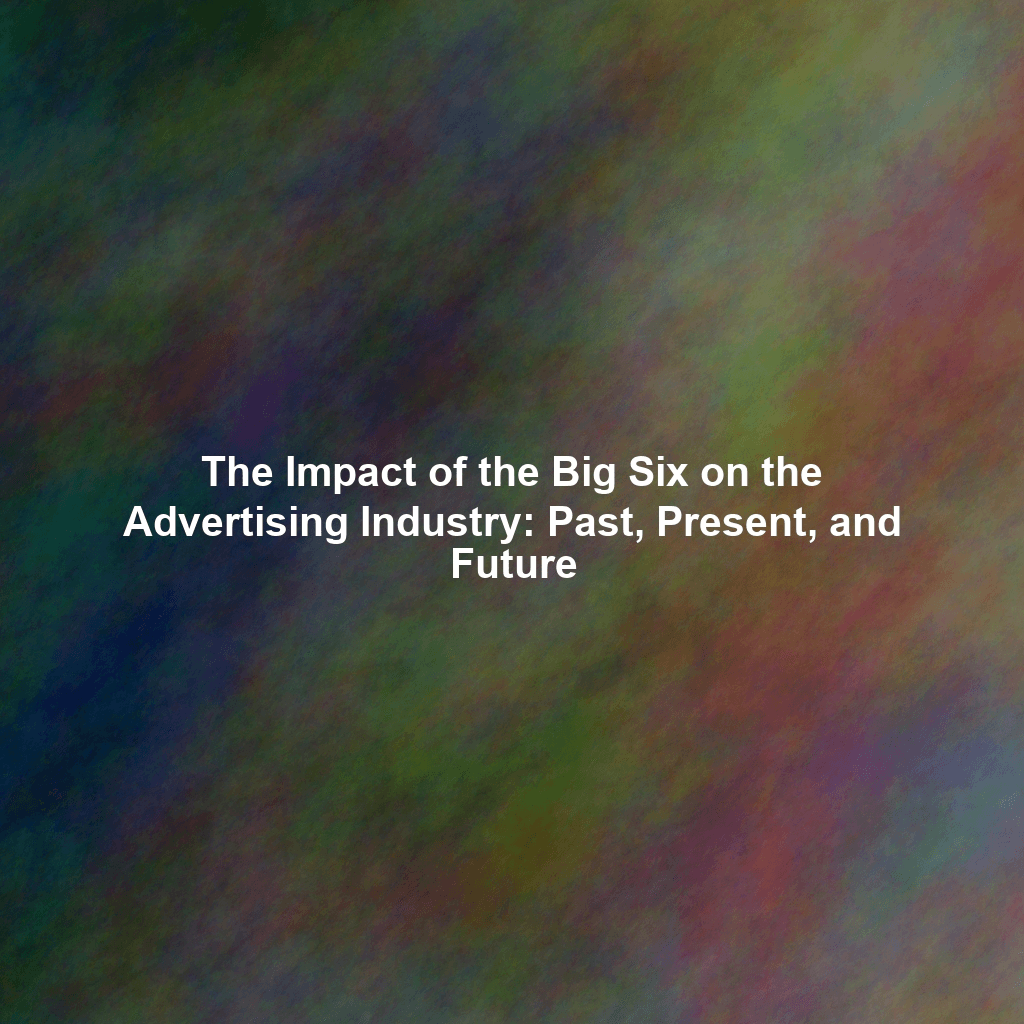A Look Back: The Rise of the Advertising Titans
The origins of the Big Six can be traced back to the mid-20th century, a period of rapid economic growth and burgeoning consumerism. Independent agencies, initially focused on print and broadcast advertising, began to consolidate through mergers and acquisitions. This consolidation aimed to offer clients a more comprehensive suite of services and a global reach, essential for navigating the increasingly interconnected marketplace. Names like WPP, Omnicom, Publicis Groupe, Interpublic Group (IPG), Dentsu, and Havas started acquiring smaller agencies, building empires that spanned continents and specializations.
Key Milestones in the Big Six’s Evolution:
- Post-War Boom: Initial growth fueled by increased consumer spending and the rise of television advertising.
- The Media Revolution: Expansion into media buying and planning, securing significant leverage with media outlets.
- Globalization: Acquisition of agencies in emerging markets to cater to multinational corporations.
- The Digital Age: Adaptation to the internet and the rise of digital marketing, SEO, and social media.
The Big Six Today: Navigating a Complex Landscape
Today, the Big Six remain dominant players, but their influence is being challenged by several factors. The rise of independent agencies, the increasing power of tech platforms (like Google and Facebook), and the growing trend of in-house marketing are all reshaping the advertising landscape. However, the Big Six still possess significant advantages, including:
- Global Reach: Unmatched ability to execute campaigns across multiple countries and cultures.
- Economies of Scale: Negotiating power with media vendors and access to vast data resources.
- Specialized Expertise: A diverse portfolio of agencies specializing in various marketing disciplines.
- Established Reputation: Brand recognition and a track record of success.
Despite these strengths, the Big Six face significant challenges. The need for greater agility and responsiveness to rapidly changing consumer behavior is crucial. Transparency concerns and the perception of bureaucratic structures also pose a threat.
Key Challenges Facing the Big Six:
- Competition from Independent Agencies: Smaller, more agile agencies are gaining market share by offering specialized services and innovative solutions.
- Rise of In-House Marketing: More brands are bringing marketing functions in-house to gain greater control and reduce costs.
- Data Privacy Concerns: Increased scrutiny on data collection and usage is forcing agencies to adapt their strategies.
- Talent Acquisition and Retention: Attracting and retaining top talent in a competitive job market requires competitive compensation and work-life balance.
The Future of Advertising: What Role Will the Big Six Play?
The future of the advertising industry is undoubtedly digital, data-driven, and personalized. The Big Six are actively investing in these areas, acquiring companies specializing in data analytics, artificial intelligence, and programmatic advertising. However, their success will depend on their ability to adapt to the following trends:
- Embracing Agility and Innovation: Breaking down internal silos and fostering a culture of experimentation.
- Prioritizing Transparency and Ethical Practices: Building trust with consumers and adhering to data privacy regulations.
- Focusing on Client-Centricity: Providing tailored solutions and delivering measurable results.
- Leveraging Technology to Enhance Creativity: Utilizing AI and machine learning to optimize campaigns and personalize messaging.
The Big Six are not going away anytime soon. Their scale and resources provide them with a considerable advantage. However, their future success hinges on their ability to adapt, innovate, and prioritize the needs of their clients and consumers in a rapidly evolving landscape.
Predictions for the Big Six:
- Continued Consolidation: Further acquisitions to expand capabilities in emerging areas like AI and data analytics.
- Greater Emphasis on Data-Driven Marketing: Increased investment in data platforms and analytics tools.
- Blurring Lines Between Agencies and Consultancies: Offering more strategic consulting services alongside traditional advertising services.
- A Shift Towards More Performance-Based Models: Clients demanding greater accountability and measurable results.
Conclusion: An Evolving Landscape
The Big Six advertising agencies have played a pivotal role in shaping the modern advertising industry. While their dominance is being challenged by new players and evolving technologies, their global reach, vast resources, and established reputations ensure they will remain significant forces for years to come. To thrive in the future, they must embrace agility, prioritize transparency, and leverage technology to deliver truly personalized and impactful experiences for consumers. The advertising landscape is constantly evolving, and the Big Six must adapt to remain at the forefront of innovation.
 Skip to content
Skip to content

